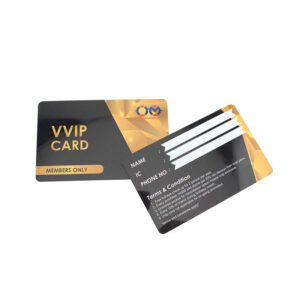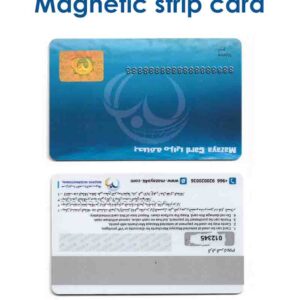Description
- Microchip: The heart of a smart card is its microchip, which can either be a contact chip or a contactless chip. The chip stores encrypted data and contains a microprocessor to handle transactions, authentication, or other functions.
- Antenna (for contactless cards): Some smart cards come with an embedded antenna for contactless communication. The antenna enables the card to exchange data with a reader via radio frequency signals, without the need for physical contact.
- Card Body: Typically made from durable materials like PVC, smart cards are designed to be flexible, lightweight, and resistant to physical wear. This makes them more durable than older types of cards, like magnetic stripe cards.
Types of Smart Cards:
- Contact Smart Cards: These cards require physical contact with a card reader. The chip on the card is inserted into a reader, which makes direct electrical contact with the chip to exchange data. Examples include older bank cards and identification cards.
- Contactless Smart Cards: These cards use radio-frequency identification (RFID) technology to communicate with a reader without the need for physical contact. Users simply tap or wave the card near the reader to complete transactions. These are commonly used in public transport systems, contactless payment cards, and some access control systems.
- Hybrid Smart Cards: These cards combine both contact and contactless technologies, allowing the card to function in both modes, depending on the application. This can offer flexibility in different environments.
- Dual Interface Smart Cards: Similar to hybrid cards, dual interface cards support both contact and contactless communication through separate circuits and chips. These cards are particularly useful in environments where both methods are needed for different functions.
Common Uses:
- Payment Systems: Smart cards are widely used for secure financial transactions. EMV (Europay, MasterCard, and Visa) smart cards are commonly used as credit and debit cards worldwide, providing an additional layer of security over traditional magnetic stripe cards.
- Access Control: Smart cards are used for secure entry into buildings, rooms, or other restricted areas. Employees or authorized individuals can use the card to authenticate their identity and gain access by swiping, inserting, or tapping the card on a reader.
- Identification: Many government-issued IDs, healthcare cards, and employee badges use smart card technology to store personal information, making it harder to counterfeit or tamper with the data.
- Transport: Many public transportation systems use contactless smart cards for fare collection. These cards allow passengers to quickly tap and pay for their ride without needing cash or tickets, streamlining the travel experience.
- Healthcare: Smart cards are used for storing patient information, medical history, and insurance details. They can provide healthcare professionals with quick and secure access to critical information.
- Loyalty and Membership Programs: Many businesses use smart cards as part of their customer loyalty programs, where points, rewards, or discounts are stored on the card and accessed when making purchases.
Advantages:
- Enhanced Security: Smart cards are far more secure than traditional magnetic stripe cards because they feature encrypted data and often require PINs or biometric verification to authorize transactions. The embedded chip makes them difficult to clone or tamper with.
- Data Storage and Processing: Smart cards have the ability to store a significant amount of data, from personal information to transaction history. The chip can also perform complex calculations or encryption tasks, making them more versatile.
- Contactless Convenience: Contactless smart cards offer the convenience of fast transactions without the need for physical contact, reducing transaction time and improving user experience. This is especially useful in environments like public transportation and retail.
- Durability: Smart cards are typically more durable and resistant to physical wear compared to magnetic stripe cards, which can wear out over time due to repeated swiping.
- Multi-Application: Smart cards can support multiple applications on a single card. For example, a single card can be used for identification, access control, payment, and loyalty program access, reducing the need for multiple cards.
Limitations:
- Cost: The manufacturing cost of smart cards is higher than that of traditional magnetic stripe cards, particularly for contactless cards, due to the embedded chip and antenna. However, the cost is decreasing as technology advances.
- Compatibility: Not all systems support smart cards, so users may encounter compatibility issues when trying to use them in different regions or with older technologies that rely on magnetic stripes or older chip systems.
- Battery (for Contactless): Some contactless smart cards, especially the ones used for long-distance communication, might require a battery, which adds to the cost and maintenance needs.




Reviews
There are no reviews yet.